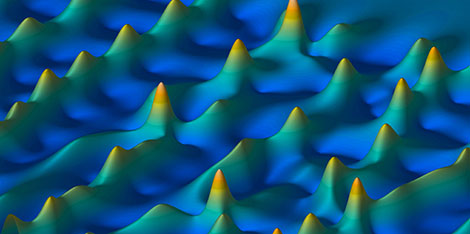
Stretching time to improve extreme event prediction
Stretching time scales to explore extreme events in nature seemed impossible, yet this feat is now conceivable thanks to a team from the Institut FEMTO-ST (CNRS/UFC/UTBM/ENSMM), which used an innovative measurement technique enabling the capture of such events in real time. This technique, which is currently applied in the field of photonics, could help predict rogue wave events1 on the ocean surface, along with other extreme natural phenomena. This research, which was conducted in collaboration with teams from Finland, Ireland, and Canada, will be published in the journal Nature Communications on December 19, 2016.
- 1Rogue waves are very large waves that suddenly form in the ocean, and are considered very rare. They also exist in optics in the form of brief and intense pulses of light.
Instability and chaos in physical systems are random natural phenomena that are generally highly sensitive to fluctuations in initial conditions, however small they may be. To understand these complex and omnipresent phenomena in nature, researchers recently conducted experiments involving the propagation of light waves, and leading to the formation of ultrafast pulses on a picosecond timescale (a millionth of a millionth of a second). The study of such phenomena in optics offers the advantage of taking place on very short timescales, thus making it possible to measure a representative sample of events and to reliably characterize its statistical properties. Although they have helped improve the understanding of the dynamics connected to extreme events, until now these studies have nevertheless been conducted indirectly, due to the response time of current detectors, which are too slow to capture these rare events.
Recent experiments carried out at the Institut Femto-ST in Besançon have made it possible to overcome this limitation. Based on the principle of a time lens2
, which stretches the timescale by a factor of 100 while increasing resolution, this new method has enabled researchers to observe giant light pulses in real time, with an intensity 1,000 times greater than that of the initial fluctuations from the light source, a laser. To do so, they used a butterfly effect known in optics as modulation instability, which magnifies the microscopic noise intrinsically present in a laser beam traveling along telecommunication fiber optics.
The scope of these results goes well beyond the field of photonics, since this type of background noise is generally considered to be one of the possible mechanisms behind the destructive rogue waves that suddenly appear on the surface of oceans, and is also believed to be present in other systems such as plasma dynamics in the early Universe. The ability to stretch timescales in optics opens a new path for the exploration and understanding of numerous natural systems for which it remains quite difficult to directly study instabilities, and thereby obtain reliable statistical samples.
This research was conducted by researchers from the Femto-ST laboratory: Franche-Comté électronique mécanique thermique et optique - sciences et technologies (CNRS/Université Franche-Comté/Université de technologie de Belfort-Montbéliard/Ecole Nationale Supérieure de Mécanique et des Microtechniques de Besançon). L'UTMB, ENSMM and Université de Franche-Comté are part of the community of universities and establishments within the "Université Bourgogne Franche-Comté."

A field of intense picosecond light pulses generated in an optical fiber. Impossible to detect using conventional equipment, the time lens has made it possible to observe them for the first time.
- 2A time lens functions in a similar fashion to a photographic lens by increasing the time dimension of an event. Another technique, time microscopy, also exists, and was used by the laboratory Physique des lasers, atomes et molécules (CNRS/Université de Lille) to study instabilities similar to those observed in turbulent fluids - see Nature Communications 7, Article 13136 (2016).
Real-time measurements of spontaneous breathers and rogue wave events in optical fibre modulation instability. M. Narhi, B. Wetzel, C. Billet, S.Toenger, T. Sylvestre, J.-M. Merolla, R. Morandotti, F. Dias, G. Genty, J. M. Dudley. Nature Communications, 19 December 2016. DOI: 10.1038/NCOMMS13675

